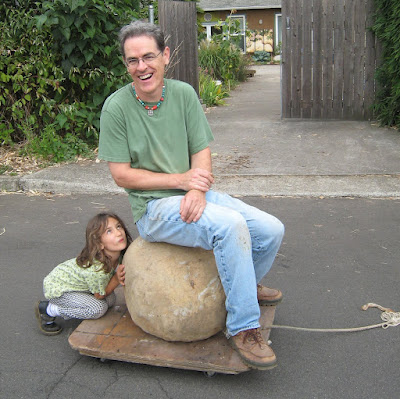
Tim's Used Books is one of my favorite places in Provincetown, MA.,- there's only so much beach and eating I can do. Tim's has an amazing selection of books. I bypass the fiction room entirely and head for the art/architecture/garden room. I've gotten obscure Japanese sculpture catalogs, out of print garden theory books and many other finds at very good prices.
Tim's is a cell phone free zone. Nothing is computerized, there is NO computer. He has the inventory all in his head. Only in the last couple of years has there been an electric cash register.
Good books mean heavy luggage.
This year's books are
The World As Sculpture by James Hall. It's a vivid, highly entertaining guide, illustrated throughout, and traces the changing understanding of sculpture from menial labor, a blue collar trade, to the growing importance of sculpture as art. Essential reading for anyone interested in the arts.
Architectural Ornament - Banishment and Return by Brent Brolin "Architectural Ornament reveals the fascinating interplay of art, society, politics, and commerce from antiquity through modernism. It explains ornament's near demise and recent revival."
-I wanted more examples of ornament from different eras, but enjoyed it's premises: Sculptures rise from menial labor to art, and the concurrent, ongoing battle between popular taste and the avant guard.
Canterbury Cathedral and Its Romanesque Sculpture by Deborah Kahn.
The 11th and 12th century sculpture at Canterbury provides a wider range of sculptural styles than can be found in any English cathedral. Deborah Kahn here traces the development of the Romanesque from its sources in Northern France and its influences from Germany and Italy, and discusses its interaction with indigenous styles. Good photographs.
-Because somehow I cannot have too many books on Romanesque art.
The Practice of the Wild by Gary SnyderThese essays, first published in 1990, stand as centerpiece of Snyder's work and thought. Future readers will come to see this book as one of the central texts on wilderness and the interaction of nature and culture.





















